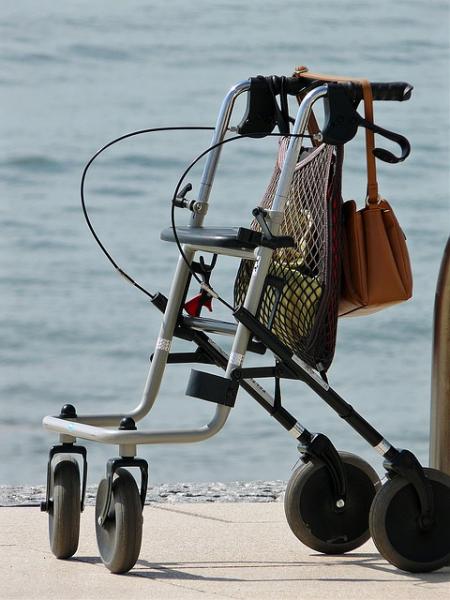The researchers made use of data from the National Health and Aging Trends Survey, a representative sample of Medicare enrollees over age 65. Frailty remains an ill-defined syndrome, a constellation of subjective and objective findings. In this study, frailty was defined as a physical phenotype, as “dysregulated energetics resulting in slowing, fatigue, and decreased muscle mass, strength, and physical activity.” The specific criteria of exhaustion, low physical activity, weakness, slowness, and shrinking were translated from survey results and subsequently extrapolated to our national population. Those with three or more of the criteria were categorized as frail, those with one or two, “pre-frail,” the remainder, free of all traits, were classified as “robust.”
Findings
Overall, 15% of the population over age 65 were frail, 45% “pre-frail.”
- Frailty increased with age and was higher among women than men. Perhaps this reflected men’s higher mortality
- Frailty was 65-85% greater among Hispanics and Blacks than Whites
- Frailty was twofold greater among individuals receiving residential care than those living in the community
- Frailty declined with rising income
None of this is especially surprising. What might be more surprising was a significant regional variation, with low frailty levels of 10% in the “mountain/desert west,” and a 22% prevalence of frailty in the “in land South.”
Chronic conditions, our health baggage, increased frailty several-fold. The most significant source was arthritis, perhaps because of its impact on mobility and self-care. Just behind was hypertension. I can see no clear bio-plausible pathway for hypertension alone to cause frailty, and I suspect that it is a more a gateway or common path to other conditions, like cardiovascular disease and diabetes, which more directly impact those frailty characteristics.
More immediate health events and outcomes also increased in the presence of frailty. There was a four-fold increase in hospitalizations, an increase in the surgical care of the back, hip, knees, and heart, and an increase in falls. Falls, are an established consequence of frailty, with a three-fold increase compared to the robust.
Frailty brought additional costs. While not all frail needed care, “Large percentages of frail persons received help in self-care (45%), mobility (50%), and household (68%) activities” – that translates to a five to ten-fold increased need for assistance, and a similar increase in healthcare expenditures. In the study’s sensitivity analysis, excluding the frail housed in residences rather than the community did little to change their findings. That means that the fragile are not cloistered but throughout our communities.
Consequences and concerns
Caring for the frail is expensive, the more frail among us, the higher our aggregate costs. But as the researchers note, the fact that many of the frail do not require special care suggests that frailty is “an underlying physiological process and not merely an outcome or marker of disease and disability.”
Here is the question I would like to pose. To what degree does the health system support frailty? When you consider the data concerning frailty and gender, men are less frail, but is that because they have died or some other constitutional quality? Could it be that our healthcare system keeps individuals alive who might otherwise have died in less expansive and less expensive systems? This is not an unimportant concern. Are the US deaths related to COVID-19 solely a reflection of our inability of containment, or do the high numbers reflect the presence of more susceptible frail? And before you answer, I know that the two are inter-related.
The other idea that springs from this study is that prevention, which I would argue is a public health issue, has been a failure. If frailty is indeed physiologic, then all of our attempts to modify lifestyle have come to naught. It is just as difficult for humans to wear a mask and maintain social distancing for four months as it is to get them to exercise, eat, and live in moderation. Masks were initially thought to be unnecessary, and then they were necessary; smoking was initially thought to be a harmless habit, then when we had gathered enough scientific data, we recognize it as a profound health risk. Masks were advised, then encouraged, and now increasingly mandated. The harms of tobacco were first advised through education. Labeling was used to encourage us to quit, and finally, smoking is increasingly restricted through taxation as well as marketing and sale restrictions. Do you see a pattern?
We should not be surprised at the pushback over prevention against COVID-19, we have amassed so much data on how prevention, for many if not most of us, is an afterthought. Frailty is a physiologic process. The increasing numbers of the frail are a testimony to how much our healthcare system can compensate for our bad behavior. Maybe our healthcare expenditures should be judged by how many frail we maintain; it certainly is an outcome to consider.
Source: Frailty in Older Adults: A Nationally Representative Profile in the United States Journal of Gerontology: Medical Sciences DOI: 10.1093/Gerona/glv133




